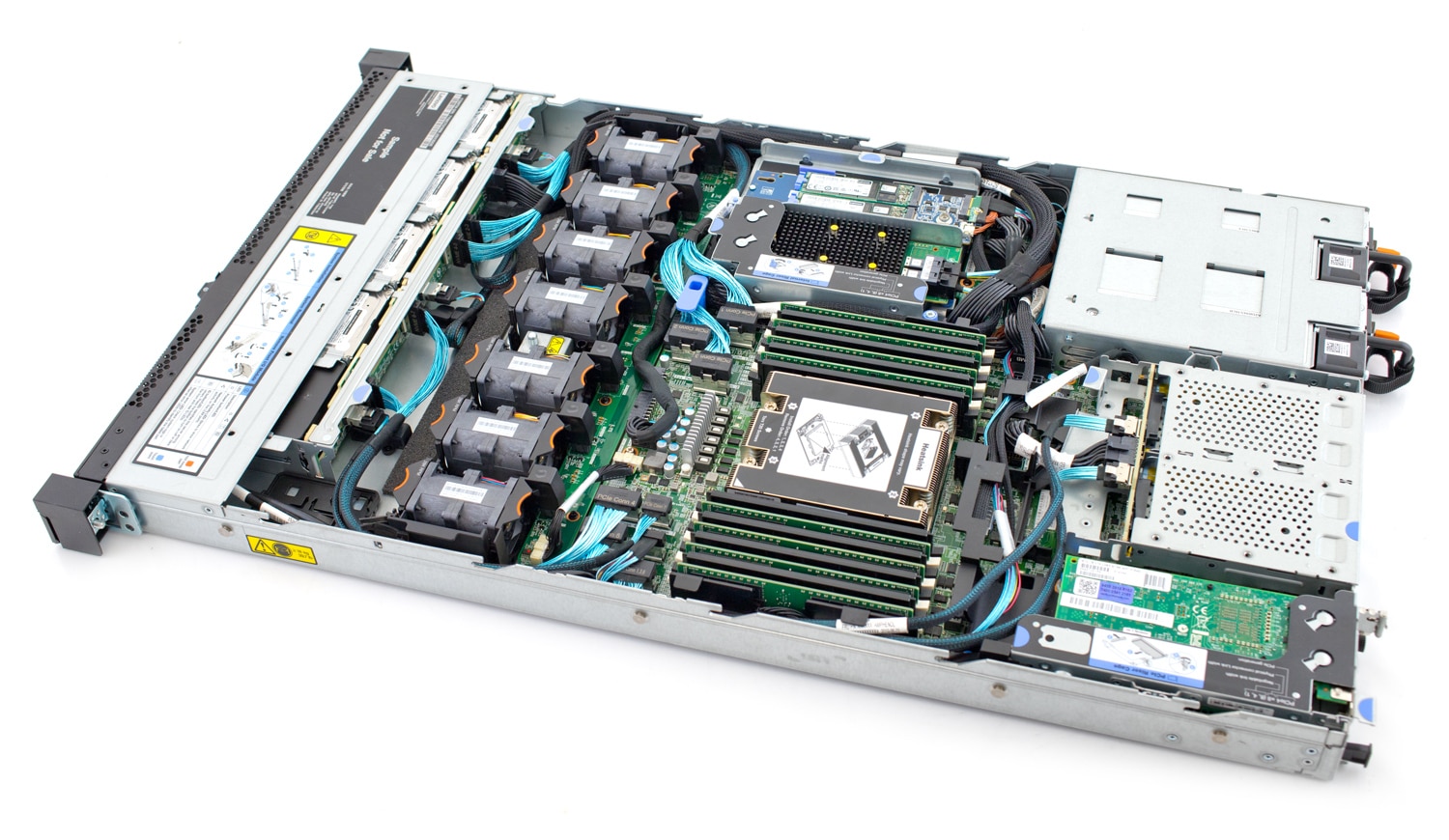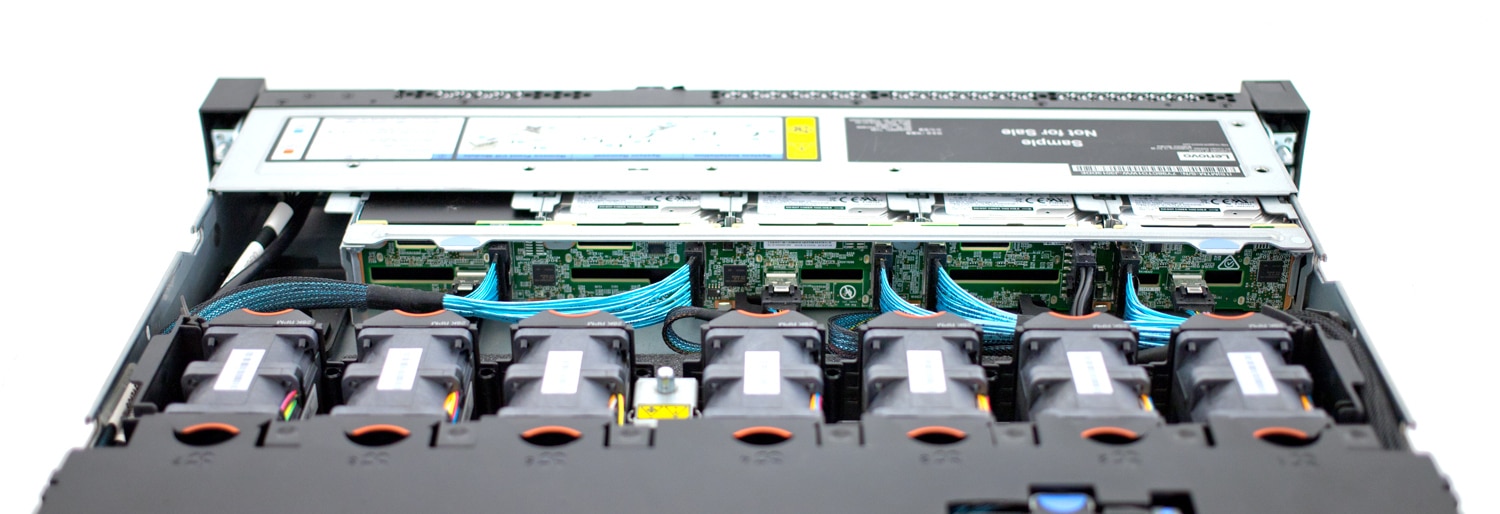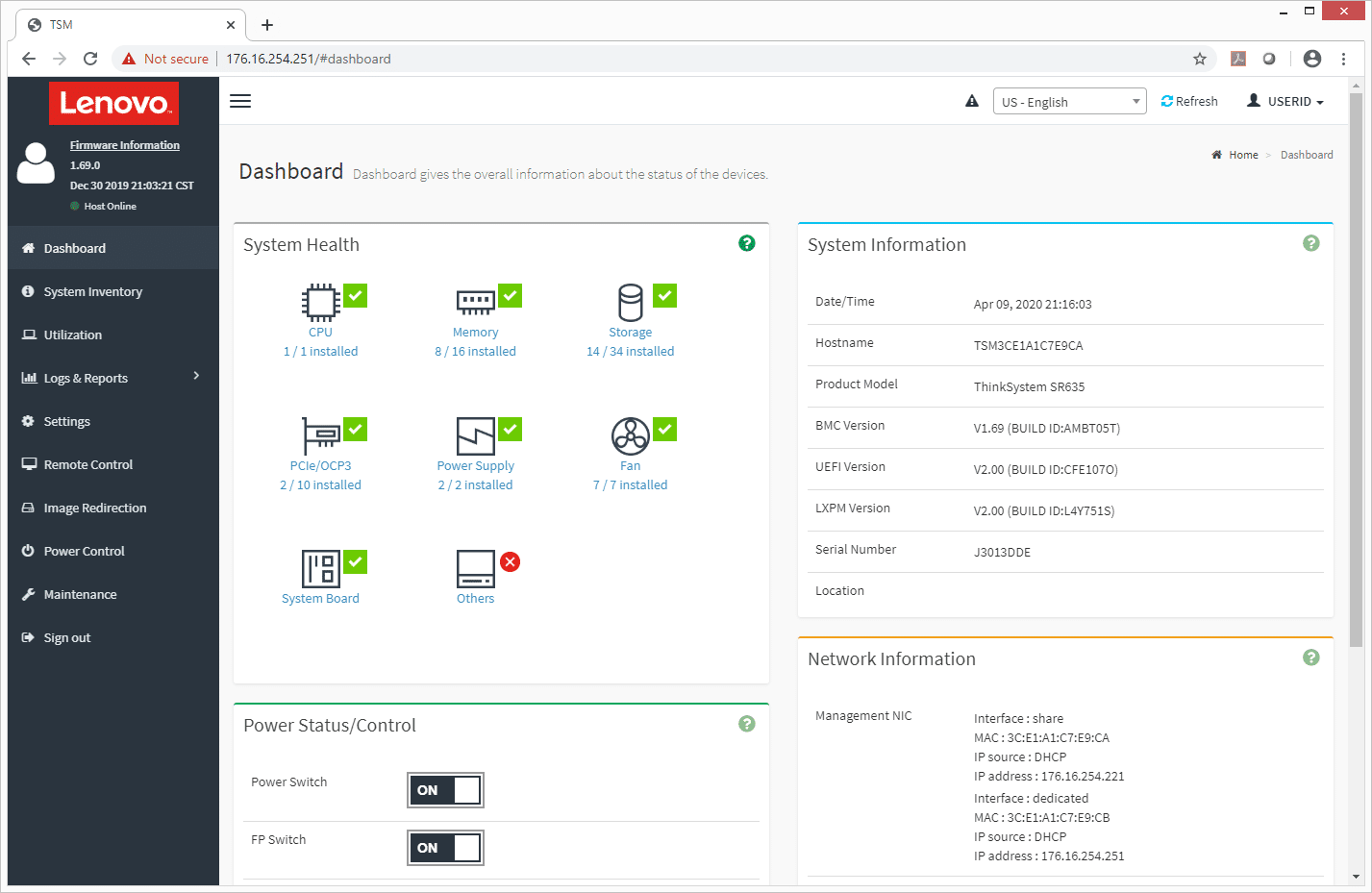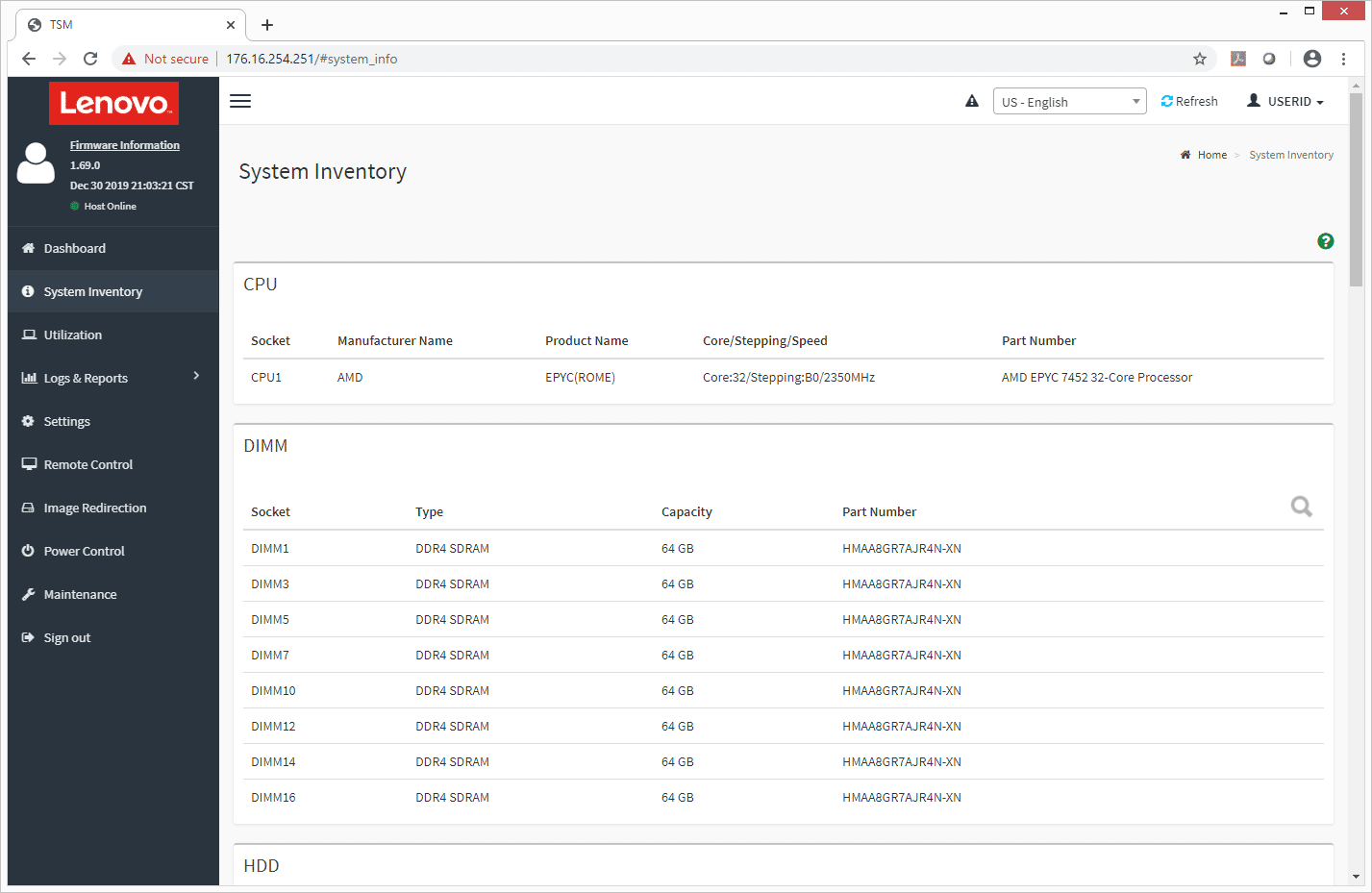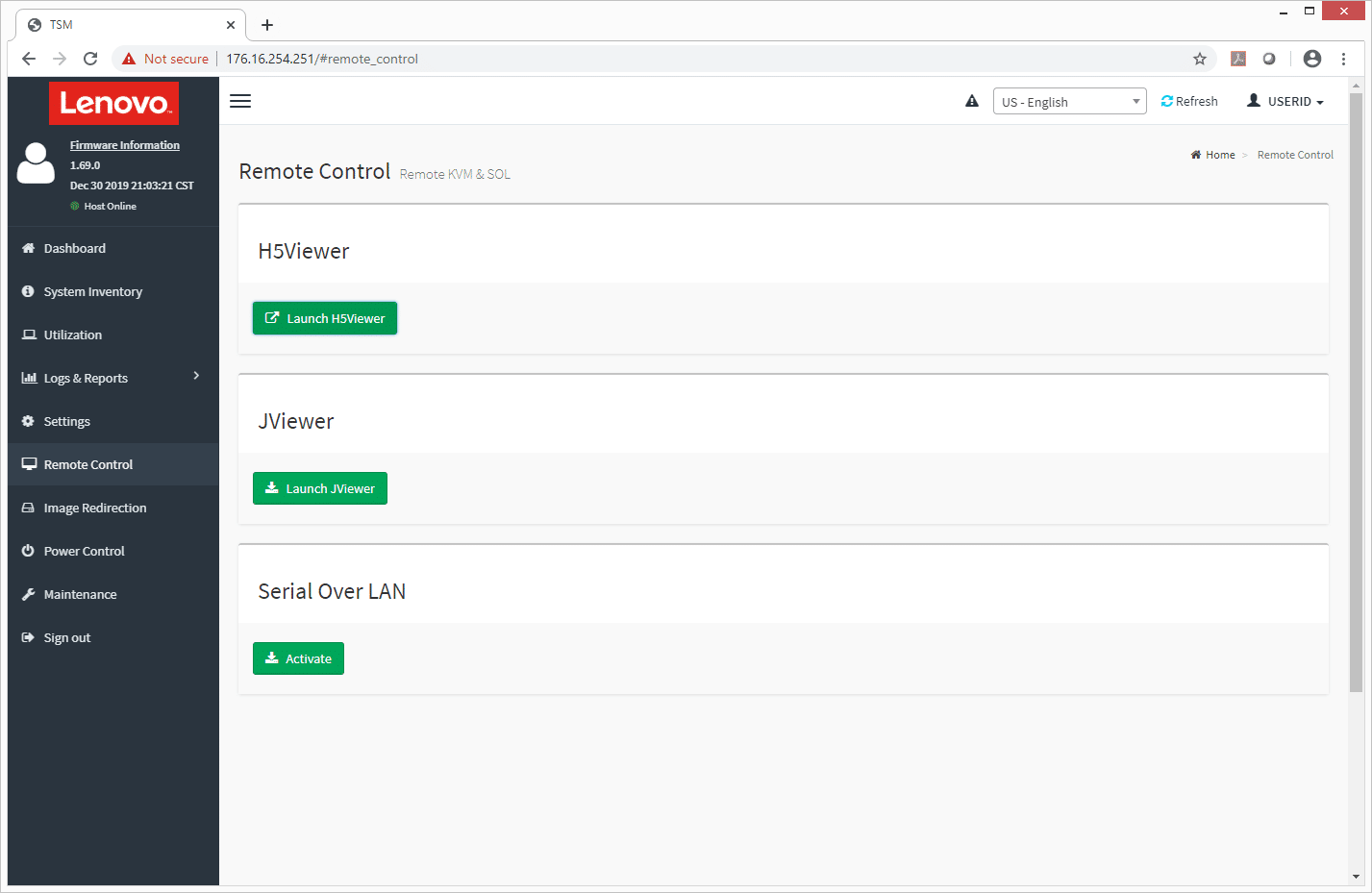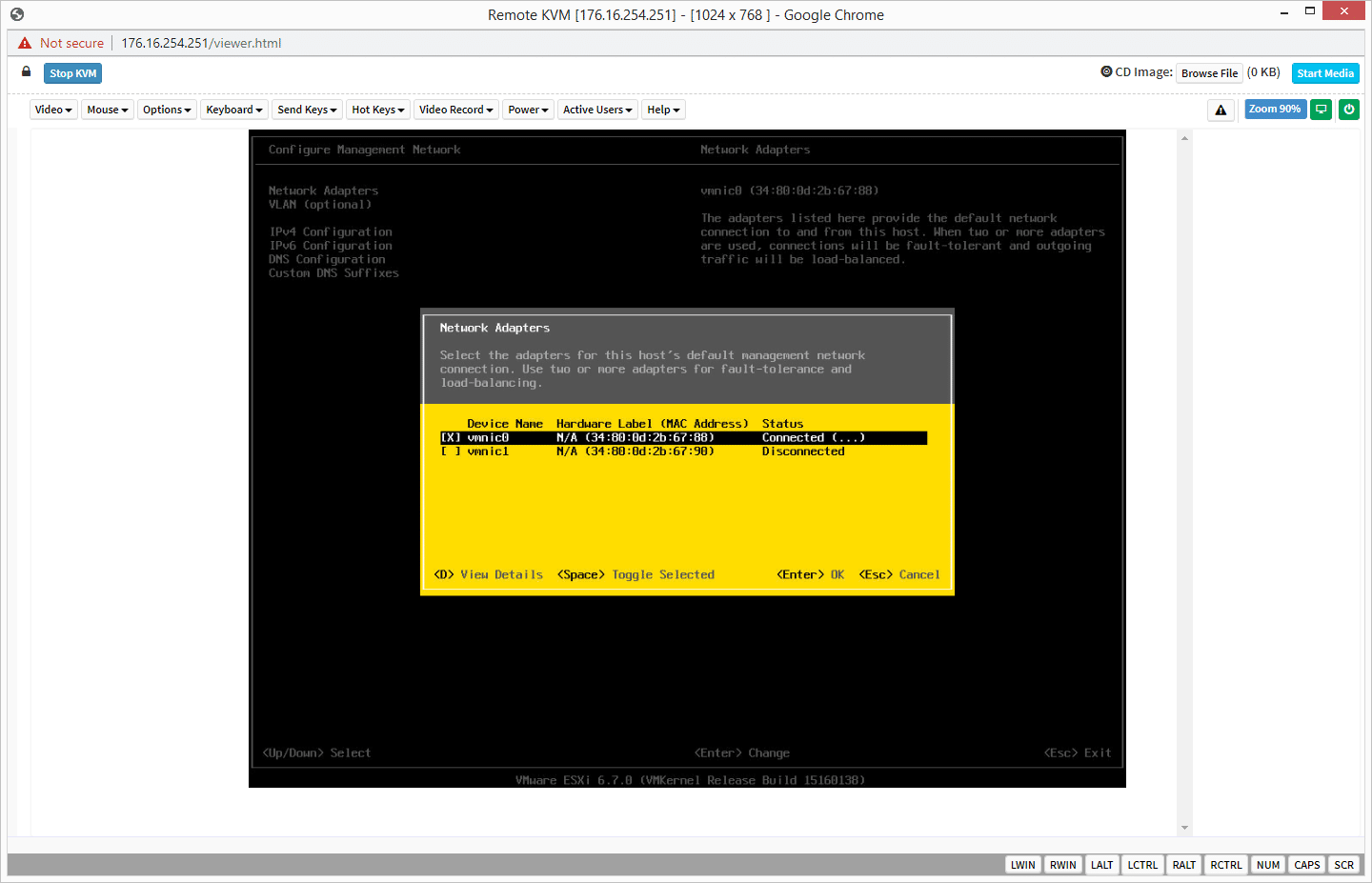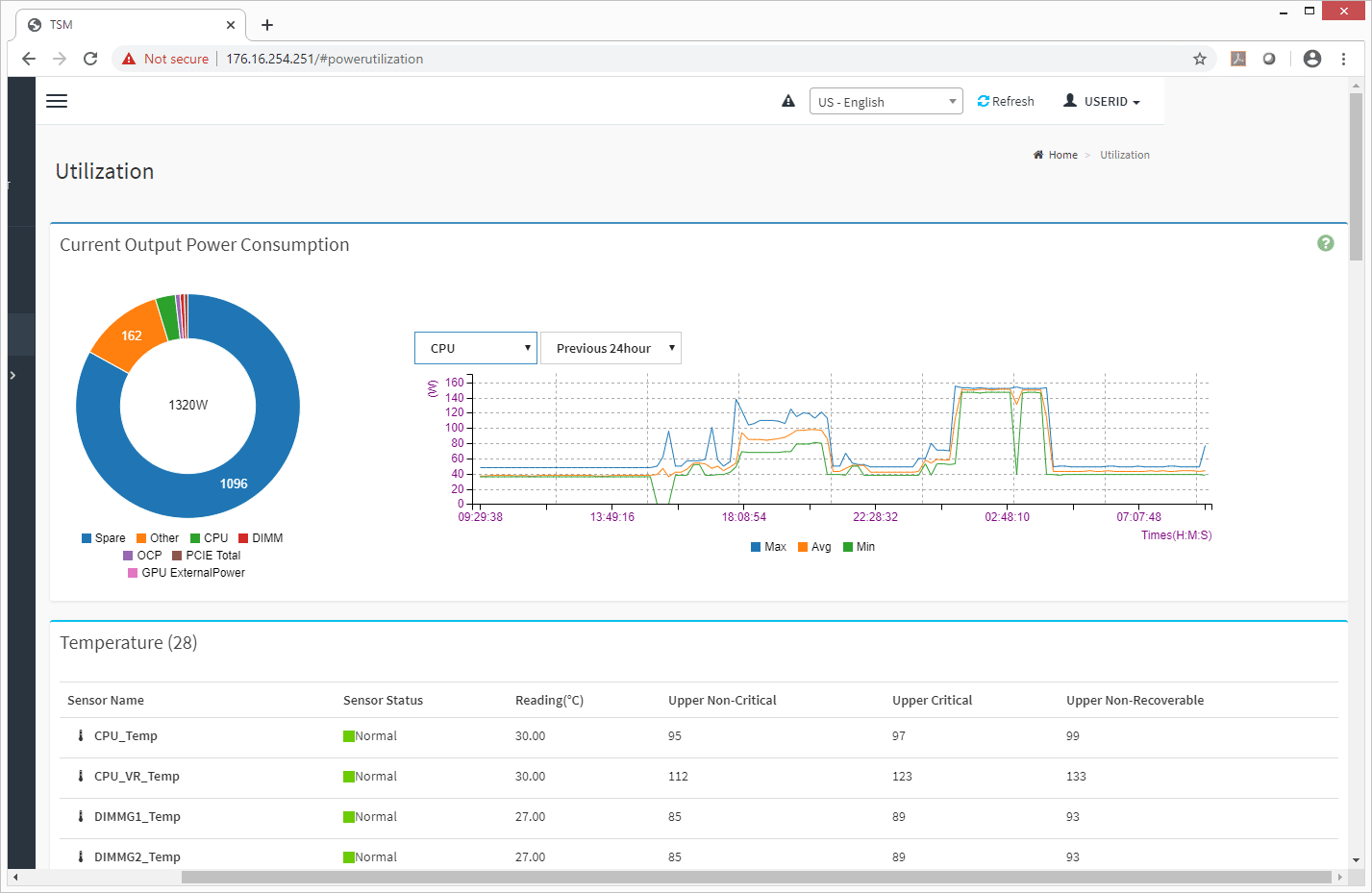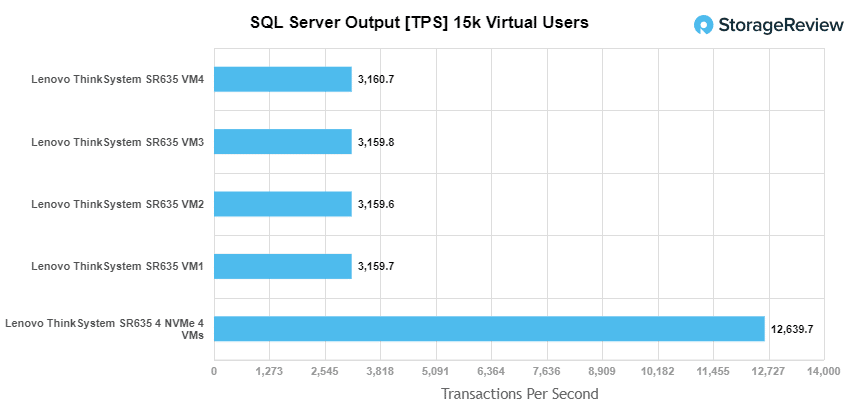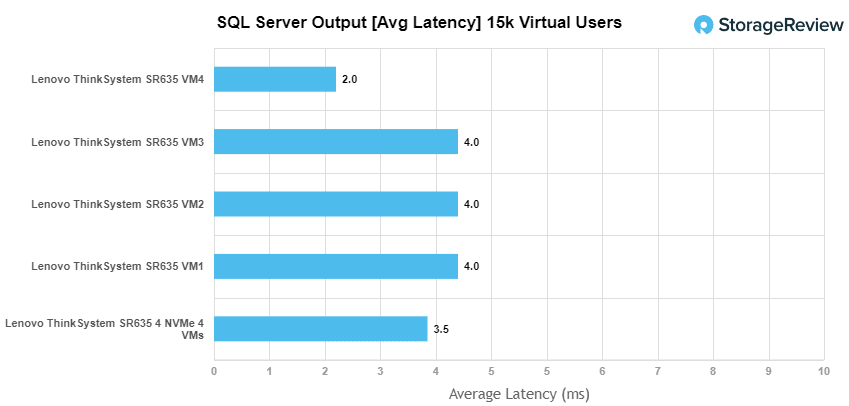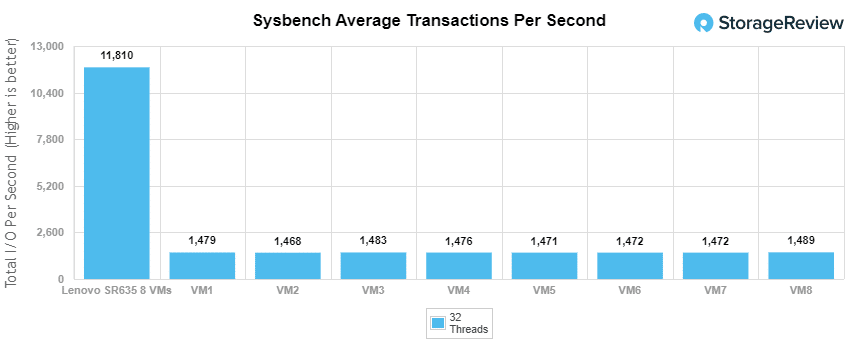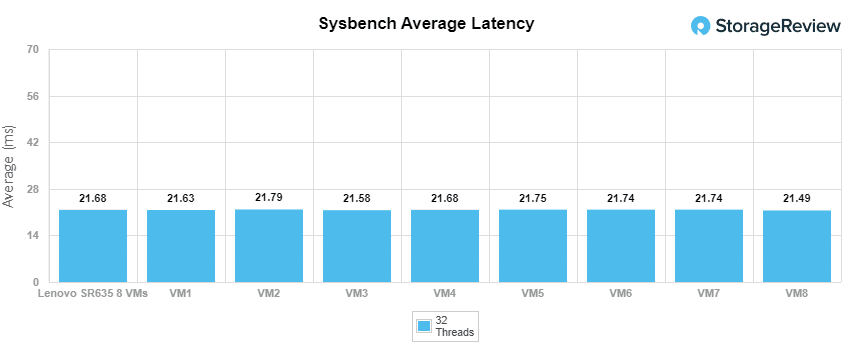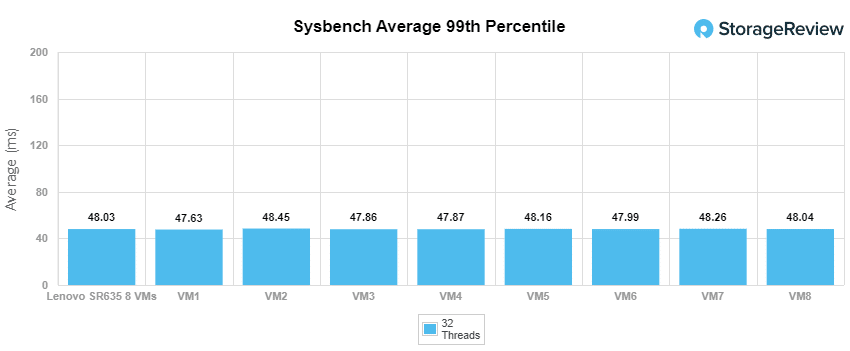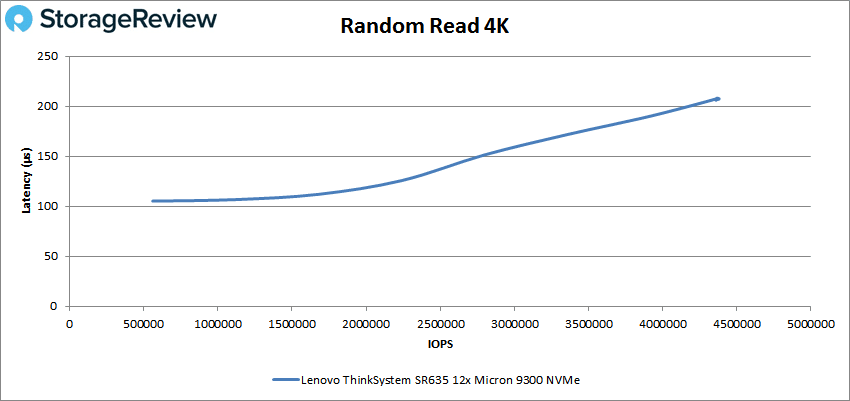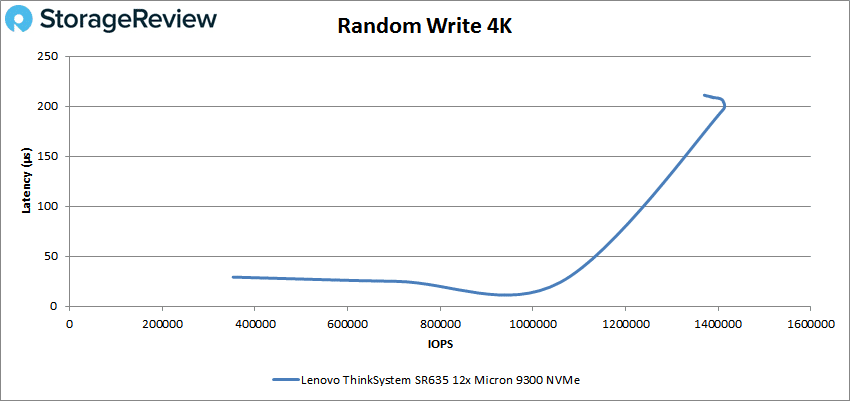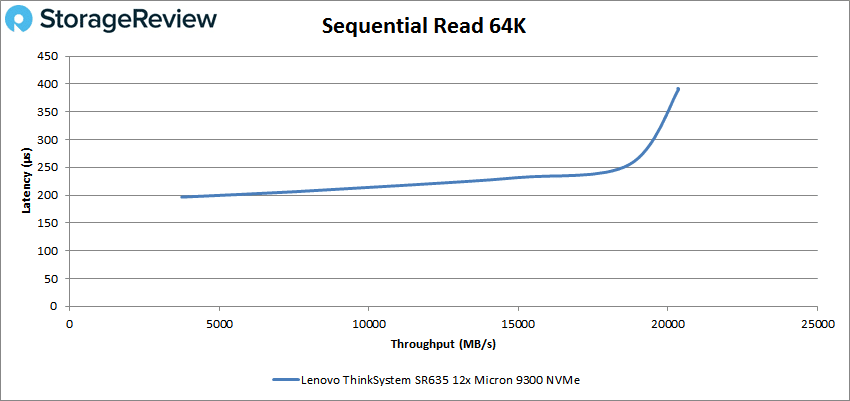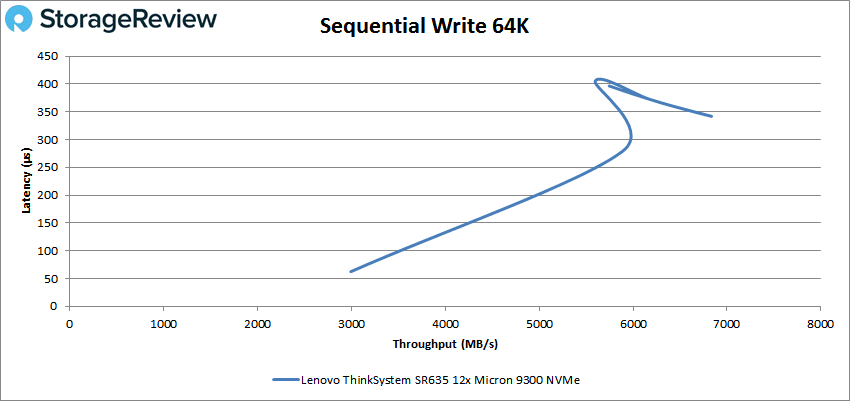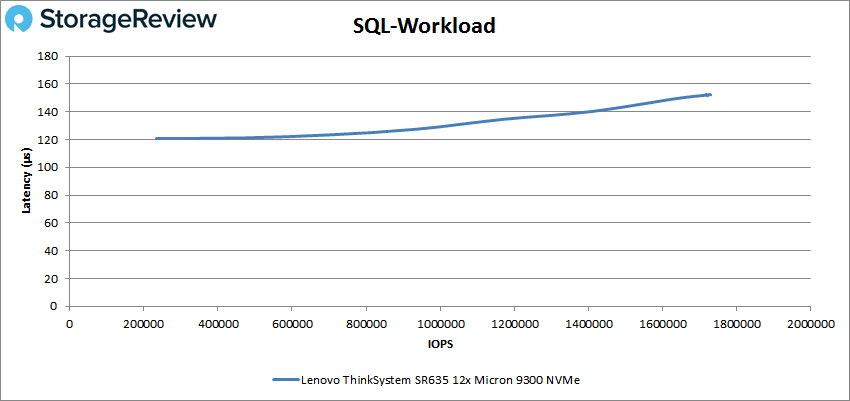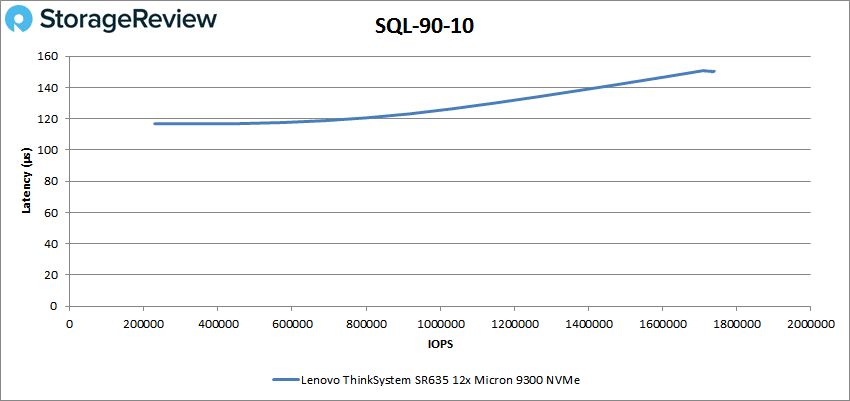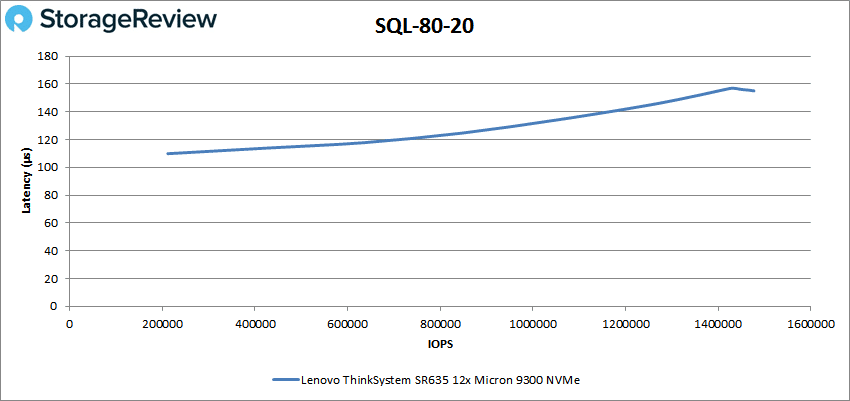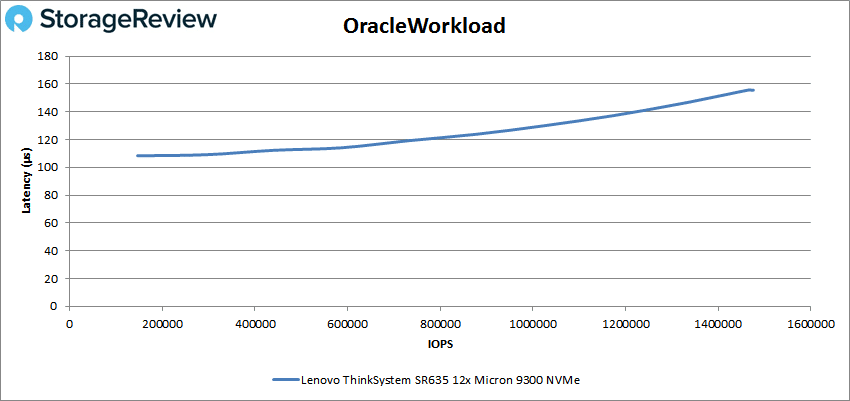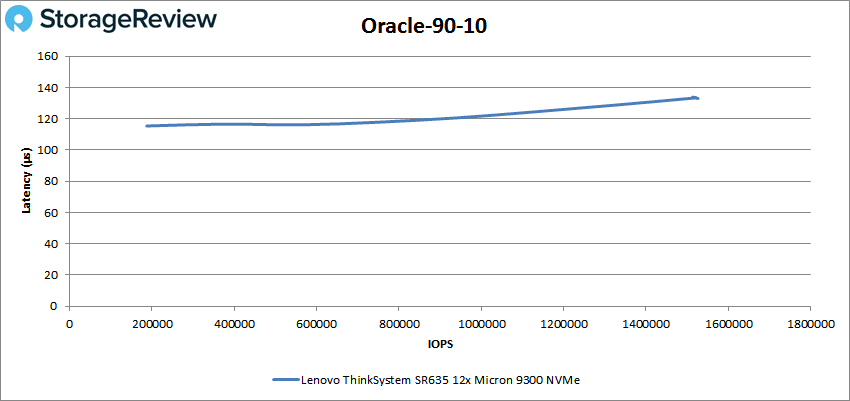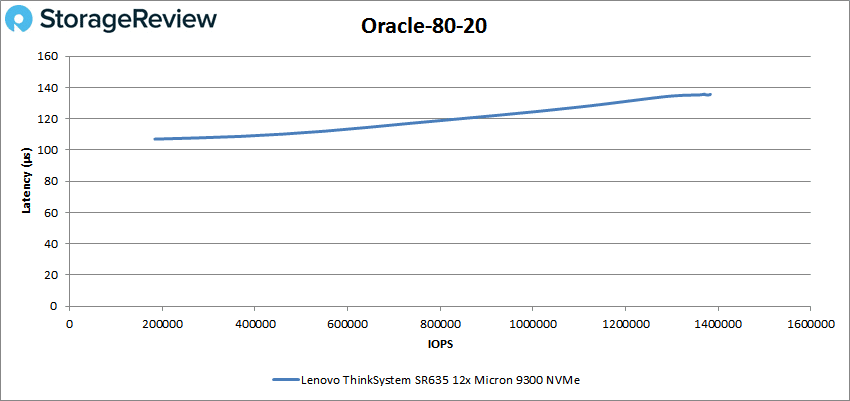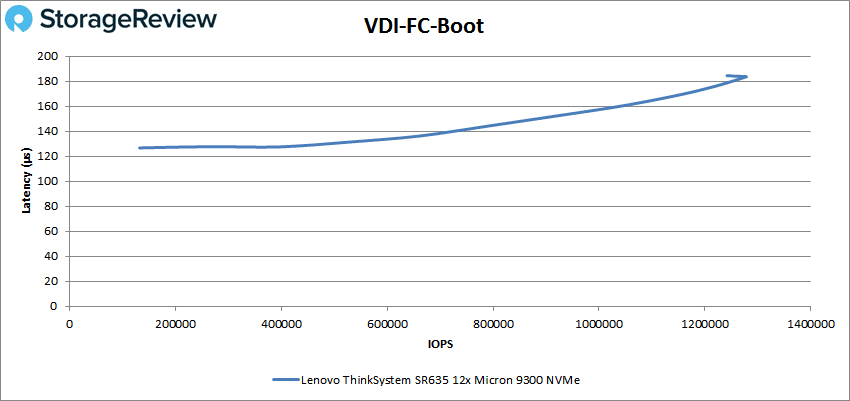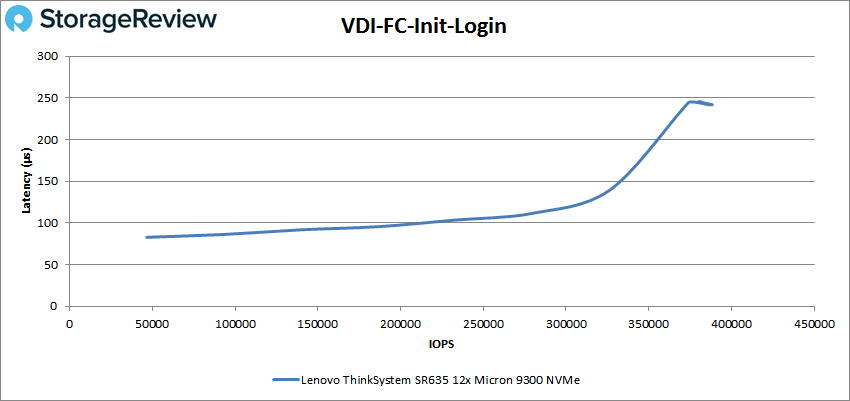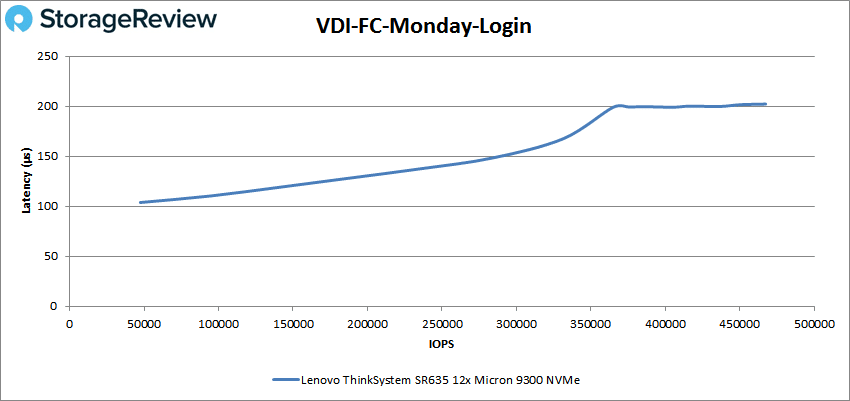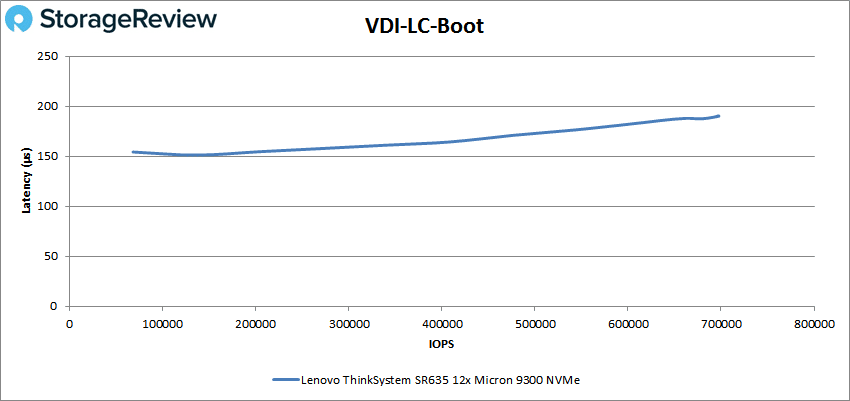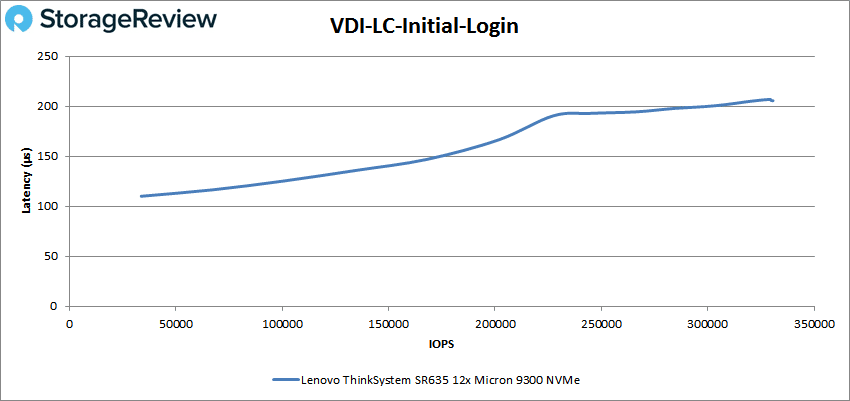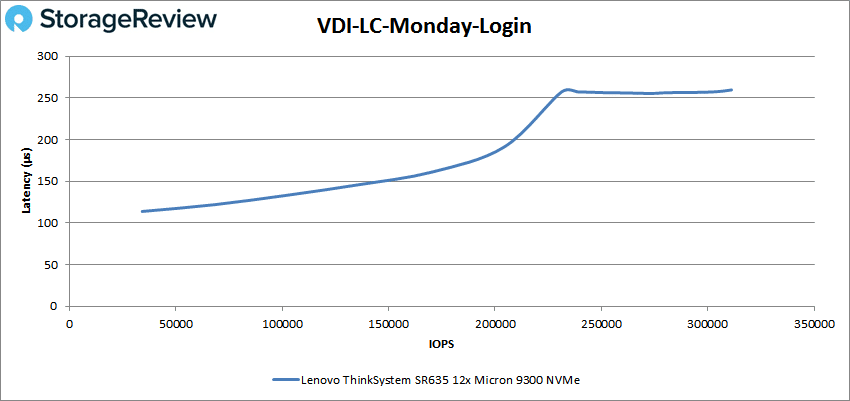The Lenovo ThinkSystem SR635 Server is a 1U, single socket server that supports the second generation AMD EPYC CPUs. There are now dozens of servers that support the newer AMD processors, but the SR635 looks to capitalize on the unique benefits that come with the second gen EPYC CPUs. In the case of this little server, one could load it up with up to 2TB of 3200MHz of DRAM and it supports PCIe 4.0 from end-to-end, depending on the backplane installed. The SSR635 can be leveraged for a wide variety of use cases though Lenovo states that it would be ideal for virtualization (VDI), data analytics, and cloud.
The Lenovo ThinkSystem SR635 Server is a 1U, single socket server that supports the second generation AMD EPYC CPUs. There are now dozens of servers that support the newer AMD processors, but the SR635 looks to capitalize on the unique benefits that come with the second gen EPYC CPUs. In the case of this little server, one could load it up with up to 2TB of 3200MHz of DRAM and it supports PCIe 4.0 from end-to-end, depending on the backplane installed. The SSR635 can be leveraged for a wide variety of use cases though Lenovo states that it would be ideal for virtualization (VDI), data analytics, and cloud.

The elephant in the room is PCIe 4.0. This is the new interface up from PCIe 3.0. Currently the only way to get PCIe 4.0 support is through 2nd gen AMD EPYC processor servers (though Intel will get in the game this year) assuming the server has a motherboard that supports PCIe 4.0. PCIe 4.0 has been covered here on StorageReview in the past, but in a nutshell it isn’t just an upgrade, it is twice the performance doubling the bandwidth and channels. There are several PCIe 4.0 devices that can take advantage of this and be added to the SR635 including GPUs, FPGAs, NICs, and certain SSDs such as KIOXIA’s CM6 and CD6.
The SR635 comes with some configurability aside from the expansion slots. As stated above, depending on the backplane users can install PCIe 4.0 NVMe SSDs. Overall the server supports up to 16 NVMe SSDs leveraging front, back, and mid-accessibility. If storage performance isn’t what one is after, they can add four 3.5” HDD bays or a mixture of SATA/SAS SSDs and HDDs.
The Lenovo ThinkSystem SR635 Server is managed through the company’s XClarity Administrator system management software. This specific server supports Lenovo XClarity Provisioning Manager Lite (LXPM Lite) for system setup and firmware upgrades.
We did a video review of the server when it came into the lab here:
For this review, our build consists of a single AMD EPYC 7452 32-Core Processor, 512GB of 3200MHz RAM, and 12 Micron 9300 SSDs.
Lenovo ThinkSystem SR635 Server Specifications
| Form factor | 1U |
| Processor | One AMD EPYC 7002 Supports processors up to 64 cores, core speeds of up to 3.2 GHz, and TDP ratings of up to 280W. |
| Memory | 16 DIMM slots. The processor has 8 memory channels, with 2 DIMMs per channel. Lenovo TruDDR4 RDIMMs are supported. DIMMs are available in two speeds: 3200 MHz and 2933 MHz. With 3200 MHz memory, the server supports a 3200 MHz memory bus speed at 1 DIMM per channel (DPC) and 2933 MHz at 2 DPC. With 2933 MHz memory, the server supports a 2933 MHz memory bus speed at both 1 and 2 DPC. |
| Memory maximum | Up to 2TB with 16x 128GB 3DS RDIMMs |
| Memory protection | ECC, SDDC, Patrol/Demand Scrubbing, DRAM Address Command Parity with Replay, DRAM Uncorrected ECC Error Retry, Post Package Repair |
| Disk drive bays | Up to 4x 3.5-inch or 16x 2.5-inch hot-swap drive bays:
|
| Maximum internal storage |
|
| Storage controller |
|
| Network interfaces | Dedicated OCP 3.0 SFF slot with PCIe 4.0 x16 host interface. |
| PCI Expansion slots | Up to 4 PCIe 4.0 slots (3 with rear access, 1 internal for a RAID adapter) plus a slot dedicated to the OCP adapter.
Three choices for rear-access slots:
Optionally, an additional internal PCIe 4.0 x8 low-profile slot for al internal drive controller. |
| Ports | Front: Two USB 3.1 G1 (5 Gb/s) ports, optional VGA port.
Rear: USB 3.1 G1 (5 Gb/s) ports, one VGA video port, one DB-9 serial port, and one RJ-45 1GbE systems management port. Internal: Optional M.2 module supporting up to two M.2 drives. |
| Cooling | Six or seven N+1 redundant hot swap 40 mm fans, configuration dependent. One fan integrated in each power supply. |
| Power supply | Up to two hot-swap redundant AC power supplies (all 80 PLUS Platinum certification): 550 W, 750 W, 1100 W and 1600 W AC options, supporting 220 V AC. 550 W, 750 W and 1100 W options also support 110V input supply. In China only, all power supply options support 240 V DC. |
| Video | Onboard graphics with 512 MB memory with 2D hardware accelerator, integrated into the ASPEED AST2500 BMC management processor. Maximum resolution is 1920×1200 at 60Hz, 32bpp |
| Hot-swap parts | Drives, power supplies, and fans. |
| Systems management | ASPEED AST2500 embedded management processor, XClarity Provisioning Manager Lite (LXPM Lite) for system setup and firmware upgrades. XClarity Administrator centralized infrastructure management, and XClarity Energy Manager centralized server power management. Light path diagnostics for local failure detection and reporting. |
| Security features | Power-on password, administrator’s password, Trusted Platform Module (TPM), supporting TPM 2.0. In China only, optional Nationz TPM 2.0. Optional lockable front security bezel. Optional chassis intrusion switch. |
| Operating systems supported | Microsoft Windows Server, Red Hat Enterprise Linux, SUSE Linux Enterprise Server, VMware ESXi. See the Operating system support section for specifics. |
| Limited warranty | Three-year or one-year (model dependent) customer-replaceable unit and onsite limited warranty with 9×5 next business day (NBD). |
| Dimensions | Height: 43 mm (1.3 in.), width: 434 mm (17.1 in.), depth: 778 mm (30.6 in.) |
| Weight | Maximum: 19.2 kg (42.3 lb) |
Lenovo ThinkSystem SR635 Server Design & Build
The Lenovo ThinkSystem SR635 is a 1U sever with a design that is familiar to anyone that has worked with Lenovo server before. A majority of the front of the server is taken up with 2.5” drive bays. Over to the right is the power button, two USB 3.1 ports and a spot for an optional VGA port (from our image above one can see that we didn’t use that option).
Flipping the server around to its butt, on the right are two hot-swap PSUs. The middle holds two more drive bays. Beneath the bays are, going from left to right, the management port, locator LED, a video port, two USB 3.1 ports, a serial port, and an NMI.
Popping the top off of the server, the first thing that stands out is the single socket and the DRAM on either side of it. Right above the DRAM in the above photo is the RAID adaptor and past that is the M.2 module. Not super easily accessible, but an admin can get to it in under a minute.
Also under the hood are the seven hot-swappable fans. One fails, pop that guy out and pop a new one in and it is ready to go again. Also, here one can see the new backplane we added to PCIe 4.0 support.
Here is a video of us replacing the backplane for PCIe 4.0 NVMe SSDs in the front:
Management
For ThinkSystem and ThinkAgile systems, Lenovo offers XClarity for management. XClarity centralizes and streamlines hardware resource management, speeds cloud as well as traditional infrastructure deployment, and enables visibility and control of physical resources from external, higher level management software tools.
The onboard ASPEED BMC dashboard tab gives users general information such as the various hardware components and their respective health. To the right, there is general system information as well as network information. Users can turn the power switch and FP switch off and on from here as well.
The System Inventory tab is a more in-depth look at the hardware components with information on each including part numbers.
As the name implies, the Remote Control tab enables admins to control the server on various devices.
Users can leverage Remote Control when they are adding devices into the expansion slots in the rear.
As power usage is important for this guy. Users can dive into utilization to see what is drawing the most power as well as the temperatures of various devices.
Lenovo ThinkSystem SR635 Server Performance
SQL Server Performance
StorageReview’s Microsoft SQL Server OLTP testing protocol employs the current draft of the Transaction Processing Performance Council’s Benchmark C (TPC-C), an online transaction processing benchmark that simulates the activities found in complex application environments. The TPC-C benchmark comes closer than synthetic performance benchmarks to gauging the performance strengths and bottlenecks of storage infrastructure in database environments.
Each SQL Server VM is configured with two vDisks: 100GB volume for boot and a 500GB volume for the database and log files. From a system resource perspective, we configured each VM with 16 vCPUs, 64GB of DRAM and leveraged the LSI Logic SAS SCSI controller. While our Sysbench workloads tested previously saturated the platform in both storage I/O and capacity, the SQL test looks for latency performance.
This test uses SQL Server 2014 running on Windows Server 2012 R2 guest VMs, and is stressed by Dell’s Benchmark Factory for Databases. While our traditional usage of this benchmark has been to test large 3,000-scale databases on local or shared storage, in this iteration we focus on spreading out four 1,500-scale databases evenly across our servers.
SQL Server Testing Configuration (per VM)
- Windows Server 2012 R2
- Storage Footprint: 600GB allocated, 500GB used
- SQL Server 2014
-
- Database Size: 1,500 scale
- Virtual Client Load: 15,000
- RAM Buffer: 48GB
- Test Length: 3 hours
- 2.5 hours preconditioning
- 30 minutes sample period
For our transactional SQL Server benchmark, the Lenovo ThinkSystem SR635 Server had an aggregate score of 12,639.7 TPS with individual VMs ranging from 3,159.7 to 3,160.7 TPS.
For SQL Sever average latency the SR635 had an aggregate of 3.5ms with individual VMs running from 2ms to 4ms.
Sysbench MySQL Performance
Our first local-storage application benchmark consists of a Percona MySQL OLTP database measured via SysBench. This test measures average TPS (Transactions Per Second), average latency, and average 99th percentile latency as well.
Each Sysbench VM is configured with three vDisks: one for boot (~92GB), one with the pre-built database (~447GB), and the third for the database under test (270GB). From a system resource perspective, we configured each VM with 16 vCPUs, 60GB of DRAM and leveraged the LSI Logic SAS SCSI controller.
Sysbench Testing Configuration (per VM)
- CentOS 6.3 64-bit
- Percona XtraDB 5.5.30-rel30.1
-
- Database Tables: 100
- Database Size: 10,000,000
- Database Threads: 32
- RAM Buffer: 24GB
- Test Length: 3 hours
- 2 hours preconditioning 32 threads
- 1 hour 32 threads
With the Sysbench OLTP the SR635 had an aggregate score of 11,810 TPS.
For Sysbench average latency we saw the server hit an aggregate score of 21.68ms.
For our worst-case scenario latency (99th percentile) the SR635 had an aggregate latency of 48.03ms.
VDBench Workload Analysis
When it comes to benchmarking storage arrays, application testing is best, and synthetic testing comes in second place. While not a perfect representation of actual workloads, synthetic tests do help to baseline storage devices with a repeatability factor that makes it easy to do apples-to-apples comparison between competing solutions. These workloads offer a range of different testing profiles ranging from “four corners” tests, common database transfer size tests, as well as trace captures from different VDI environments. All of these tests leverage the common vdBench workload generator, with a scripting engine to automate and capture results over a large compute testing cluster. This allows us to repeat the same workloads across a wide range of storage devices, including flash arrays and individual storage devices.
Profiles:
- 4K Random Read: 100% Read, 128 threads, 0-120% iorate
- 4K Random Write: 100% Write, 64 threads, 0-120% iorate
- 64K Sequential Read: 100% Read, 16 threads, 0-120% iorate
- 64K Sequential Write: 100% Write, 8 threads, 0-120% iorate
- Synthetic Database: SQL and Oracle
- VDI Full Clone and Linked Clone Traces
With random 4K read, the Lenovo ThinkSystem SR635 Server peaked at 4,359,731 IOPS at a latency of 207.4µs.
For 4K random write, we saw another strong peak of about 1.4 million IOPS at roughly 197µs before dropping off a bit.
For sequential workloads we looked at 64k. For 64K read the SR635 peaked at 325,696 IOPS or 20.4GB/s at a latency of 390.4µs.
64K write saw a peak performance of 109,369 IOPS or 6.84GB/s at a latency of 342µs.
Our next set of tests are our SQL workloads: SQL, SQL 90-10, and SQL 80-20. Starting with SQL, the SR635 peaked at 1,729,719 IOPS with a latency of 152.3µs.
For SQL 90-10 the server had a peak score of 1,739,441 IOPS at a latency of 150.4µs.
SQL 80-20 saw a continuation of the strong performance of the SR635 with a peak of 1,477,161 IOPS and 155.1µs for latency.
Next up are our Oracle workloads: Oracle, Oracle 90-10, and Oracle 80-20. Starting with Oracle, the Lenovo ThinkSystem SR635 Server went on to peak at 1,476,071 IOPS with a latency of 155.6µs.
With Oracle 90-10 the server peaked at 1,526,055 IOPS with a latency that only went up about 18µs from beginning to end to finish with 133µs.
Oracle 80-20 the SR635 peaked at 1,378,363 IOPS at 135.2µs for latency.
Next, we switched over to our VDI clone test, Full and Linked. For VDI Full Clone (FC) Boot, the Lenovo ThinkSystem SR635 Server peaked at 1,277,815 IOPS with a latency of 183.5µs before dropping off slightly.
VDI FC Initial Login saw the server peak at 388,345 IOPS at a latency of 242µs.
For VDI FC Monday Login the SR635 hit 467,401 IOPS with 202µs latency.
Switching to VDI Linked Clone (LC) Boot, the Lenovo server peaked at 697,644 IOPS with a latency of 190.1µs.
VDI LC Initial Login gave us a peak performance of 330,695 IOPS at a latency of 205.6µs.
Finally VDI LC Monday Login saw the SR635 hit 311,144 IOPS with 259.6µs for latency.
Conclusion
The Lenovo ThinkSystem SR635 Server is a powerful little 1U server. With support for the second generation AMD EPYC processors brings all the benefits that that can bring. Specific to this server, the support for PCIe 4.0 interface. With the correct backplane, the SR635 can support PCIe 4.0 end-to-end, bring the latest GPUs, FPGAs, NICs, and SSDs; unleashing their full potential. For those that don’t need such extreme power punch, the server can be configured in several different ways from all NVMe to 3.5” HDDs, depending on one’s needs.
With all the PCIe 4.0 build up, we were leading the reader on a bit. There are PCIe 4.0 SSDs working their way into our lab, but for now we leveraged PCIe 3.0 drives in the form of Micron 9300 SSDs. While PCIe 4.0 SSDs could potentially be the next big thing, they are not yet widely available in quantities we need for testing servers. That should change soon however, we will revisit the performance profile of the SR635 as those drives trickle in.
For performance we ran both our Application Workload Analysis as well as our VDbench workloads. Our Application Workload Analysis consists of SQL Server and Sysbench. For SQL Server the Lenovo ThinkSystem SR635 Server hit numbers of 12,639.7 TPS in aggregate and an aggregate average latency of 4.5ms. For Sysbench aggregate score we saw 11,810 TPS, an average latency of 21.68ms, and a worst-case scenario latency of 48.03ms.
The SR635 was able to hit some impressive numbers in our VDBench workloads as well, especially considering it is a single socket server. Highlights include 4.4 million IOPS in 4K read, 1.4 million IOPS in 4K write, 20.4GB/s in 64K read, and 6.84GB/s in 64K write. For our SQL workloads the server was able to hit 1.7 million IOPS in SQL and SQL 90-10, with SQL 80-20 showing a peak score of 1.5 million IOPS. Oracle workloads showed peak scores of 1.5 million IOPS for both Oracle and Oracle 90-10, with 1.4 million IOPS in Oracle 80-20. The server broke 1 million IOPS once more in VDI FC Boot with 1.3 million IOPS.
Those that are looking to take advantage of the fastest possible gear in a tiny footprint are in good company with the Lenovo ThinkSystem SR635 Server. The proper backplane can bring end-to-end PCIe 4.0 performance with support for up to 16 2.5″ Gen 4 NVMe SSDs; but as one can see above, broadly available SSD technology also packs quite a punch. The ingenuity and modularity of the Lenovo design is extremely impressive, no other top tier server vendor has anything like what Lenovo has done with the SR635. The fact that so much 2.5″ Gen4 storage can be smashed into this box is astounding, making the SR635 one of our favorite servers and our first Editor’s Choice Award winner of 2020.
Lenovo ThinkSystem Rack Servers
Engage with StorageReview
Newsletter | YouTube | Podcast iTunes/Spotify | Instagram | Twitter | Facebook | RSS Feed


